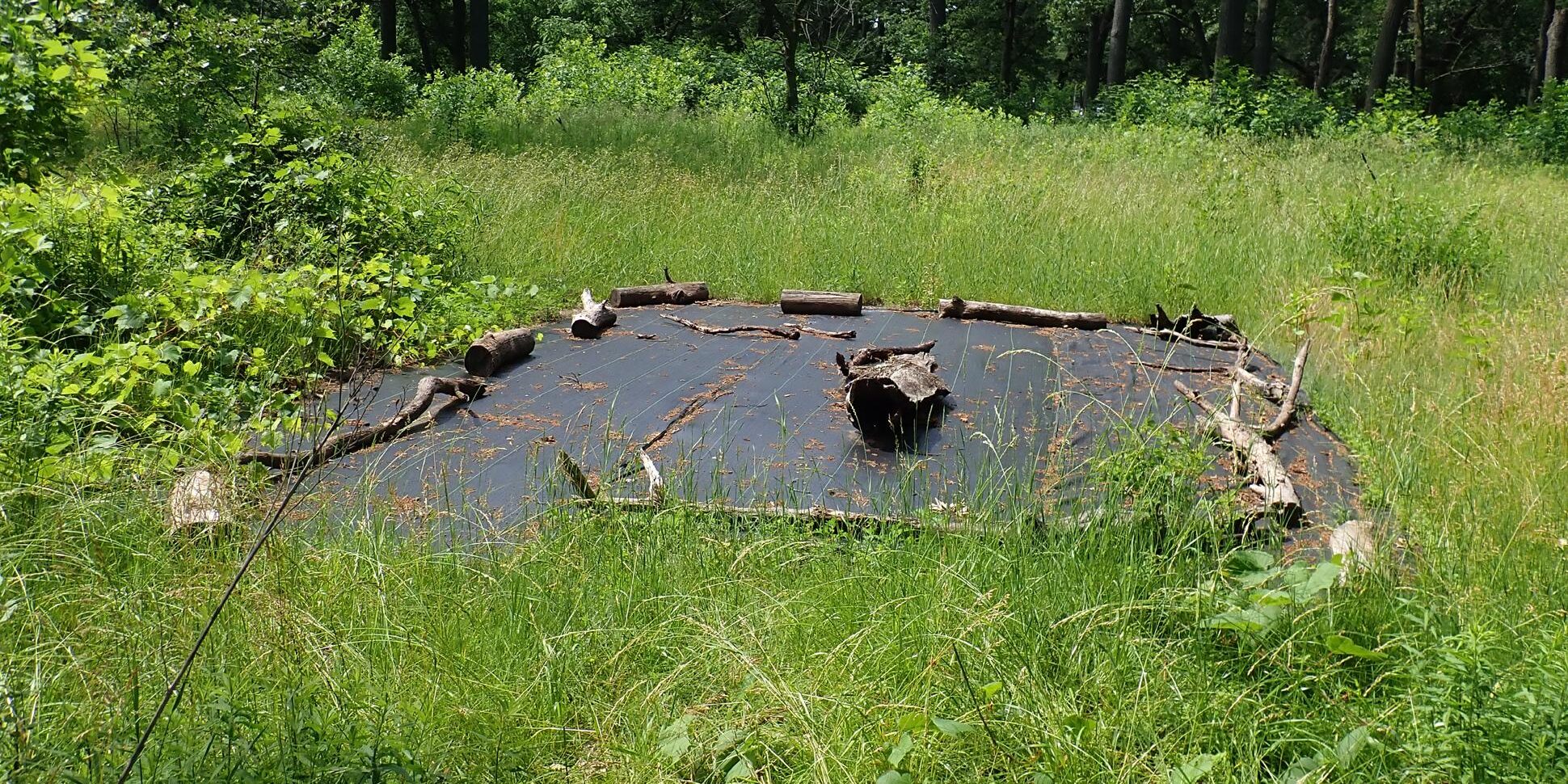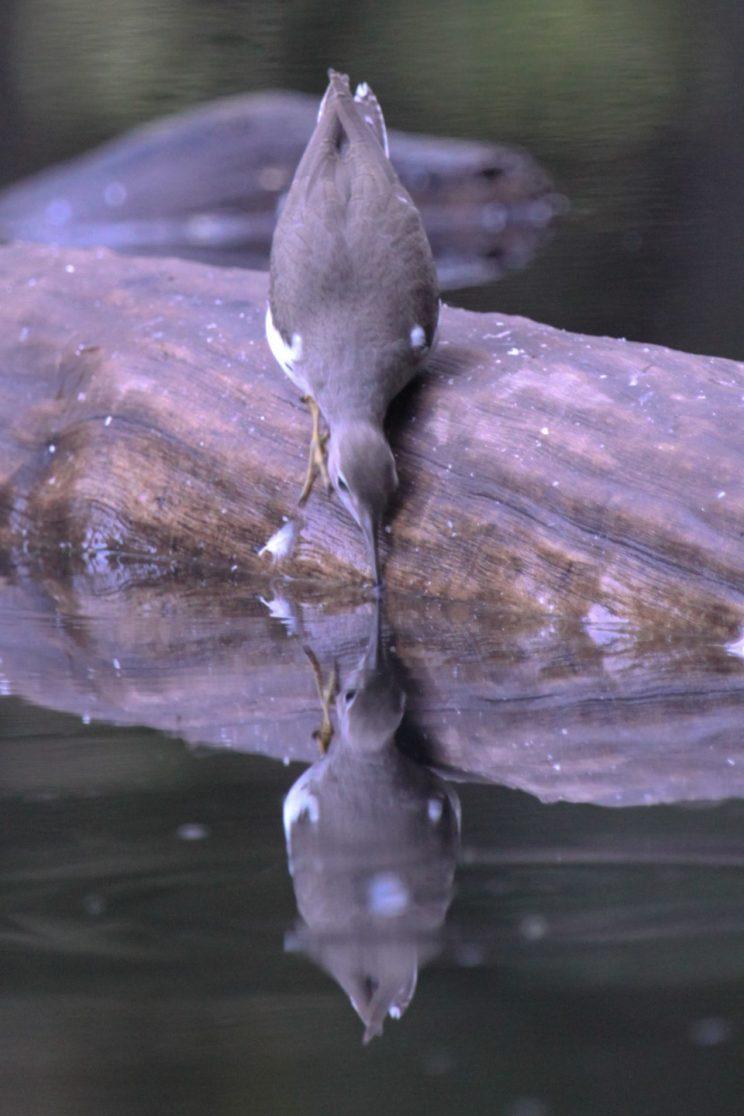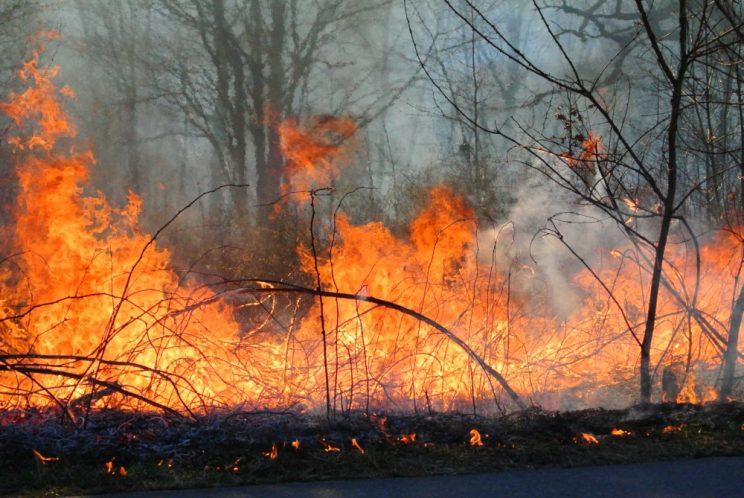updated by Jaclyn Scobie
Before there was High Park, much of this land was home to the black oak savannah ecosystem – an important ecosystem that made up much of southern Ontario in the past. It has seen a rapid decline since colonization began, and now there is less than 1% of this ecosystem remaining in Ontario. Due to its unique diversity of flora and fauna, it is an important habitat to restore and maintain.
One such effort in High Park is known as Sculpture Hill.
The Solarization Technique
To begin the restoration process, some of the large sculptures were removed and swaths of landscape fabric were laid down in a technique called "solarization". This technique (also known as "tarping") requires the fabric to remain fastened to the soil for a minimum of 1-2 years to be effective. This is often used in areas where there are large patches of unwanted plant species that are not contributing to the ecosystem that is being restored. The lack of sunlight kills the plants underneath and denies the re-sprout of invasive species from the seedbank.

In this case, the landscape fabric was fastened for a year when the site had its first planting by the Volunteer Stewards and Urban Forestry in September 2009. A second planting in June 2010 was followed by a third in September 2010. With continued maintenance throughout the last ten years, and additional plantings in 2015 and 2017, Sculpture Hill has made great strides toward a healthy savannah ecosystem after decades of mowing maintenance and exposure to recreational activities



















